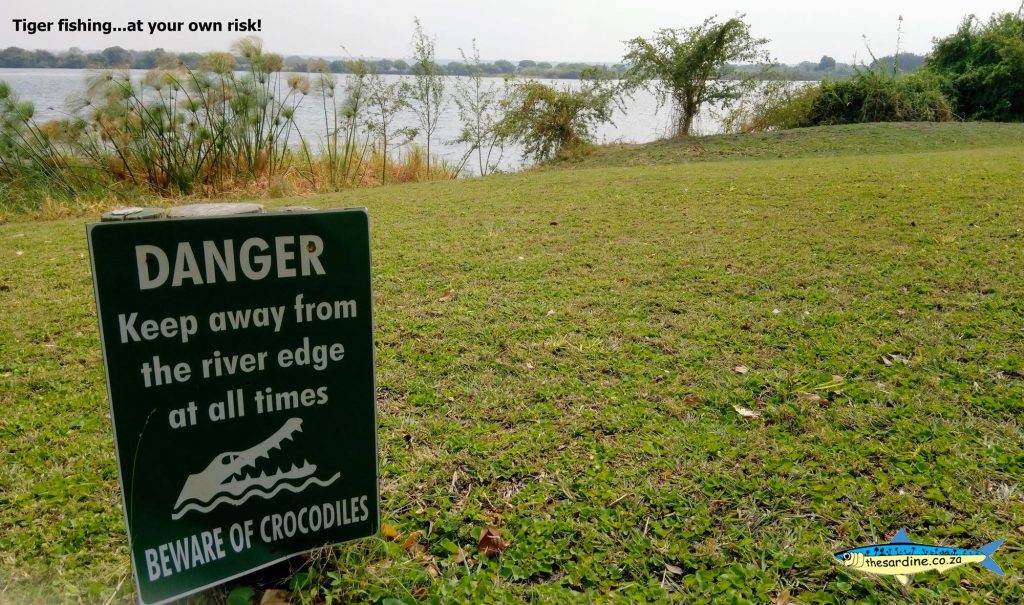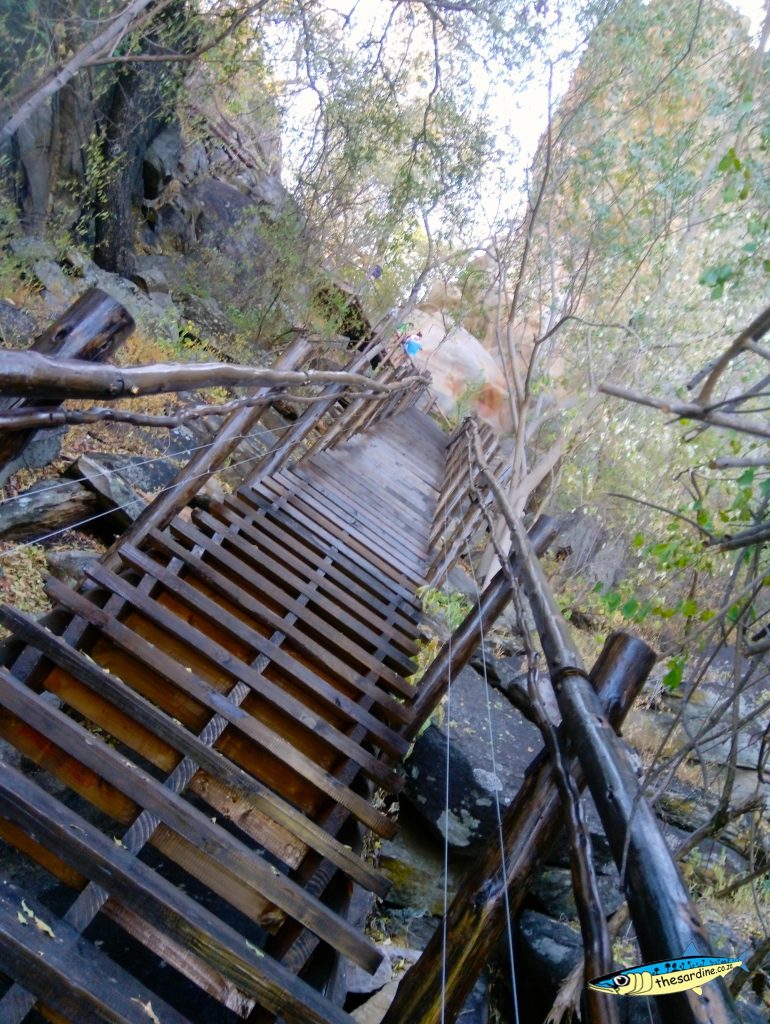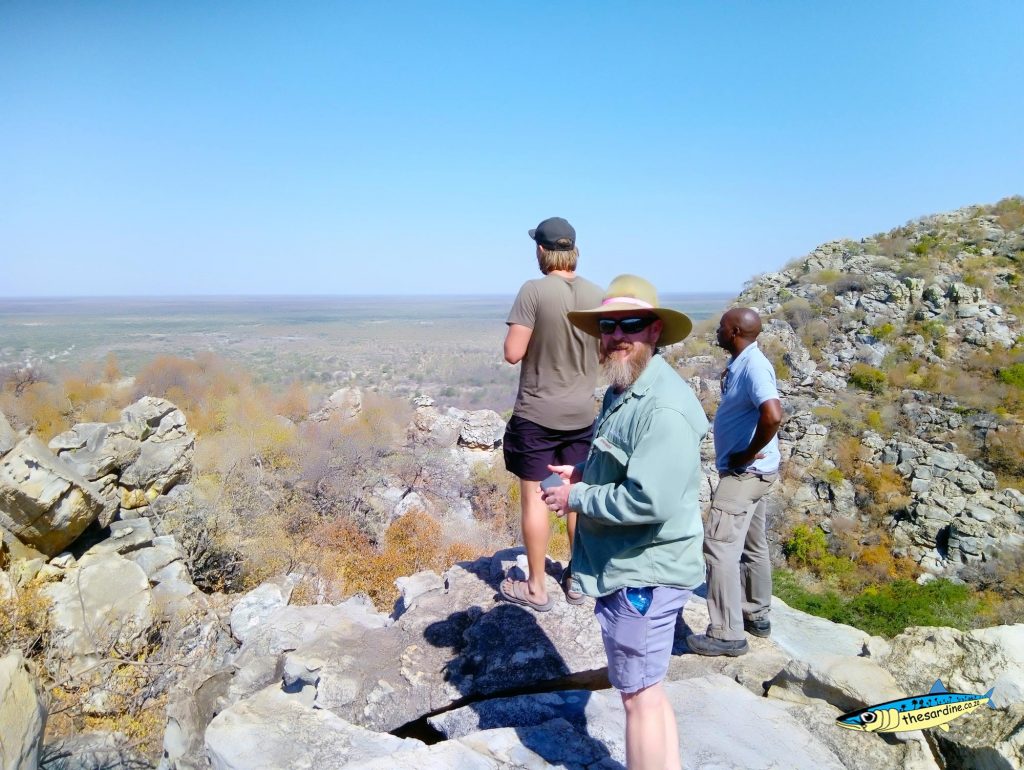
Chobe Tigers Part 1: Tiger fishing as I know it
Tiger fishing as I know it. 9 Strikes. One hookup. No fish landed. In Captain Duarte’s marlin speak… that is 9 for 1 for 0. Or 9-1-0!
This instalment is part one of a series The Sardine Team are doing – on tiger fishing up here in Botswana and Namibia waters.
The fish are here. That’s for sure. And the second long hookup was to a monster fish. They get 20lbs often here in the grand Chobe River, Botswana side, we are. But these fish are wily as all hell. Finickily ferocious, they dog my lures right to the edge. If I can count 9 strikes, I could count 20 solid chases. Sometimes by two or three fish at a time.
The strikes are hugely explosive, and how they miss my super shark single hook is beyond me. I mean, they literally slam into the spoon, mouth agape and teeth sticking out sharply. I can’t wait to deploy underwater and drone cameras to see how they get around that hook of mine. I was even this very morning thinking of changing to a 5x treble?! I might still.
It has been three absolutely delightful fishing sessions so far. Well, four actually, but that first attempt – we spent a night at Kazungula, just outside of Kasane but also right on the Chobe, ended quickly and fruitlessly as a territorial hippopotamus stalked my spot.
In Kasane, we are right on the river too, but I take the car, since my new favourite fishing spot – I am calling it Tiger Island after a cute little crocodile-infested island just off the point- is open on all sides. To what you may wonder? Well. From the right-hand side, and the water can come the elephants. My fishing spot is right on the edge of the elephant corridor. And it’s rather narrow and used often. Not that the elephants are the major problem. The major threats come from the water directly. And the bush on the water’s edge. Where crocodiles hide and hunt. And hippos get all uptight if you get in their way.
But this spot I had chosen, had no crocodile slides on the beach near me, and the hippo paths were a little away either side of me too. I had a clear patch of river frontage to my self. There was elephant dung everywhere though!

Tiger fishing can be risky. You have been warned. 
Tiger fishing puts you right into nature 
Yip! This photo, along with all the others and the video coming up, are shot on my phone 
Wont ever do something so stupid again – I promise 
The MYDO SS Moby 600 was purpose built to take on the ferociously finicky tiger fish. 
Safe off road parking! 
Another magnificent sunrise over Tiger Island, just past Crocodile Point
I’d been told to fish near and under trees, for Tigerfish. The water was clean and the bank gently sloped into the water. There were a few spots where I could perch up a metre or so and about 2m back from the edge. Seemingly feelingly safe! And the water was clean so I was sure I could see any threatening sized animal coming for me. But I still parked the car right close to my deemed safest fishing spot, so I had an escape if someone came around with any ill intent.
I found most of the action to be right at the edge. And the really big strike, well there were two of them actually, one hooked up for a second melting line off my spool, occurred about 5 metres from the edge. Spectacular to be able to get to these monsters without having to go by boat anywhere.
The bigger spoons had as much action as the tiny models. And at one point, this did happen…ha ha ha…thank you Cameron for the pic.

The action came and went in sudden flurries of chaos. I was trying to film and fish at the same time – impossible trying to do it ace out, and some of the things I witnessed were proper mind-blowing. Huge fish chasing other big fish?! Dogfights of note. Then as fast as the action came, it went.
This is tiger fishing as I know it. I will never for the life of me be able to explain, the tiger I caught on the Okavango – with my first cast of the trip. The fish took one of my Mydo Luck Shots with a Gummy Baby Tiger plastic, on a cranked out little rod, and set the tone for that trip (follow this link to that story). We absolutely hammered the enthusiastic little tiger fish, especially on the tiny little Mydo SS Moby Spoon. At 60mm, and looking like a stealth fighter, this little lure is so much fun. I especially bought along on this trip, a tiny little outfit, with 15lb braid, to fish the Moby 60 effectively. I am getting 25 metres with a light flick, and even into the wind. The lateral line holes of the Moby allow air through increasing distance.
The retrieve I use is very erratic, and one of the reasons I saw so many fish charge and miss my lure completely. Right in front of my eyes, in the shallow clear water. But the gentle shad-like retrieve does not pique anyones interest at all, and so the variable speed pull, with a few erratic flicks will get the spoon looking and behaving like an injured, fleeing baitfish, is the one. I call this retrieve The Vibrator and if you get the timing and speed right, looks amazing. And produces the chases and strikes.
So…back to the water then…sequel to follow!

This article was sponsored by The Fishing Pro Shop. Check out their new website right here.
Stay posted via Facebook at http://facebook.com/thesardine.co.za/
Check out our fishing experiences on offer throughout Southern Africa and beyond – right here.









